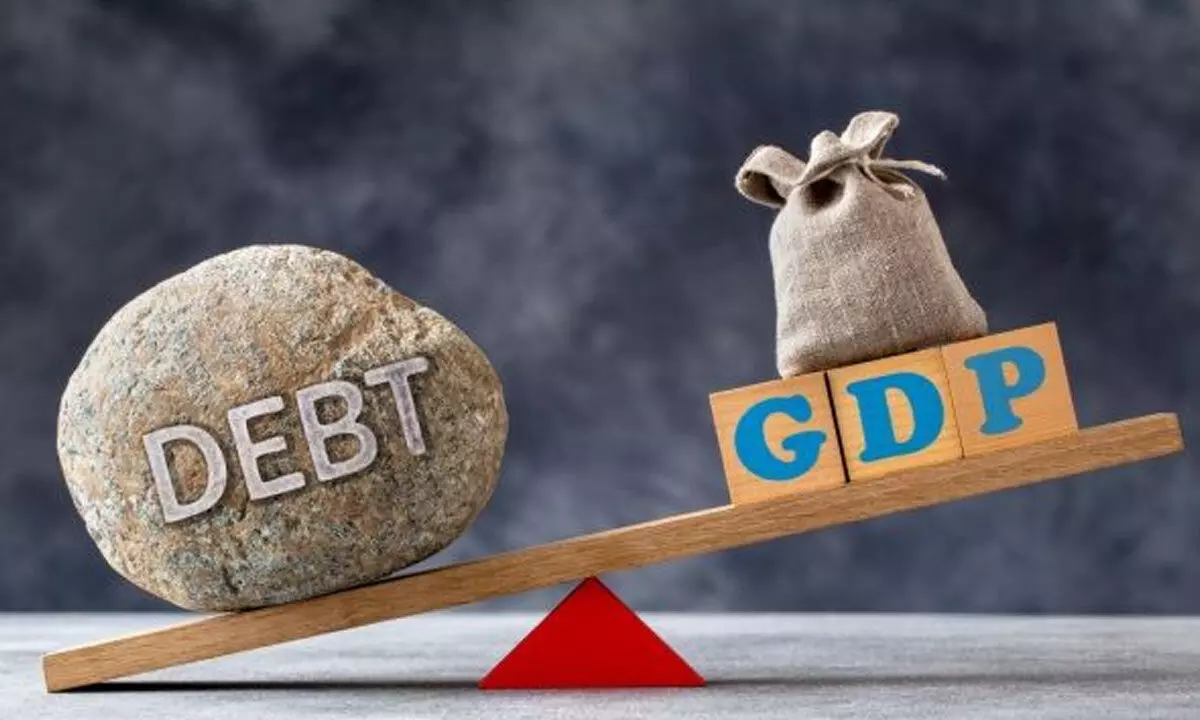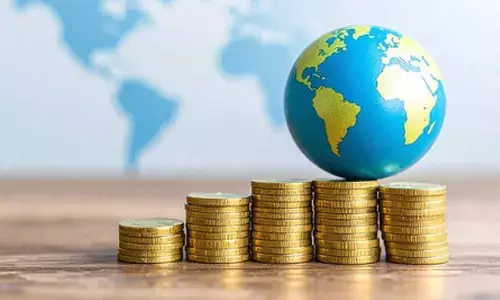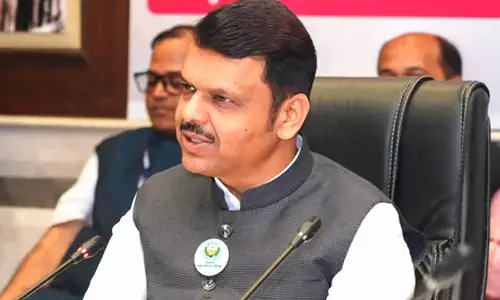Upward trend of sovereign debts

There are growing apprehensions at the upward trend of the global debt levels for quite some time now
There are growing apprehensions at the upward trend of the global debt levels for quite some time now. Most countries are facing rising inflation for which their respective central banks have tightened their monetary policy to tame inflation. With inflation growth trade off, the increase in interest rates will impact growth of the economy, while GDP growth has been on the lower scale of growth. During Covid-19, both developed and developing countries, particularly low and middle income nations had to pump in and incur large government expenditure towards economic revival while attending to people’s health, which all resulted in a substantial public debt.
As per the latest IMF data, global debt, which remained significantly higher than its pre-pandemic levels last year, may return to its long-term rising trend. The public debt, which stood at 229 per cent of the GDP in 2019, has risen to 258 per cent of GDP in 2020, due to Covid 19 and came down to 238 per cent last year, according to IMF’s Global Debt Database. In dollar terms, the debt stood at $235 trillion, or $200 billion above its level in 2021. Further analysis reveals that public debt stood at 92 per cent of GDP whereas private debt, which consists of household and non-financial corporate debt stood at 146 per cent of GDP.
Even though most of the economy has rebounded from 2020 onwards, there has been a hike in prices of commodities and food prices amid uncertainty in supply, due to the geopolitical situation from the Russia-Ukraine war, energy prices and a much higher than expected inflation, which led to public debt and fiscal deficit going high.
What are the implications of the high level global debt? Government spending on development schemes, long-term development projects and essential social projects may take a hit, unless the economy GDP growth comes to normal and inflation is kept under control. The US, due to its special position in the world and dollar serving as a reserve currency, has been able to withstand a significantly high debt.
This may not be the case with emerging economies, particularly low and middle income countries.
The G20 New Delhi Declaration has separate mention on managing global debt vulnerabilities. Some countries with debt-crisis like Zambia, Ghana, Ethiopia and Sri Lanka which got partially addressed, had a mention in the declaration and there was a call for resolving them. There was also a reference to the need to enhance the capital of multilateral development banks to enable them to extend soft credit speedily to these debt vulnerable countries.
The falling of currency value and depreciation pushed up the debt burdens of the low-income countries. Foreign exchange inflows and outflows will be volatile in the current global economic and political uncertainty, which will impact their respective currencies unless the country has enough forex reserves to withstand the outflow.
Foreign trade has been on the decline in the recent past due to global slowdown, which will have a negative impact on the balance of payment and current account deficit particularly countries depending on too much on imports, particularly oil importing countries.
In this regard, India has managed its fiscal deficit reasonably well. Even though the fiscal deficit was high during Covid-19 and GDP suffered negative growth during 2020/21, the recovery has been substantial with GDP coming back to higher growth with fiscal deficit moderating. This year India has estimated GDP growth of 6.5 per cent and fiscal deficit at 5.9 per cent and India has kept a target of 4.5 per cent fiscal deficit by 2025/26. Even though we had a volatile position in forex reserves suffering during the uncertainty, RBI could further build up forex reserves and it stood at $593.90 billion as on September 8. India’s external debt stood at $624.7 billion in March 2023, thereby showing a decline to 18.9% of GDP from 20% of GDP a year earlier. The national debt stood at Rs 155.6 lakh crore ( 57.1% of GDP) as of March 3, 2023. India’s current account deficit, according to India Ratings, is likely to narrow about $10 billion or one per cent of GDP in the April- June quarter of FY 24.
According to the IMF, China played a central role in increasing global debt in the recent decades and currently its growth is suffering whereas there are concerns about private debt. China’s economic slowdown is not a good sign for other countries as it has an impact on other countries’ trade and growth. China’s total debt at $47.5 trillion is still markedly below that of the United States ( close to $70 trillion). As for non-financial corporate debt, China’s 28 per cent share is the largest share in the world.
Currently countries are to focus on emission control, for which large investments are required to fight climate change, spending on alternative energies and less dependence on coal. Hence there was a call for climate finance and financial assistance to developing countries from developed countries. These are the factors kept in mind while contracting further debt as countries cannot afford to have further debt vulnerabilities.
Hence the IMF report calls for “Governments should adopt strategies to help reduce debt vulnerabilities over the medium term. This includes vigilant monitoring of Household and non-financial corporate debt burdens and related financial stability risks. To reduce public debt vulnerabilities, building a credible medium term fiscal framework can guide the process to balance short term spending needs with medium fiscal sustainability.”
During Covid-19 and thereafter Indian corporates took the opportunity to deleverage the balance sheet and their borrowing levels have eased compared to earlier levels.
It is now their turn to take up private investment on a larger scale to supplement the government capex which will have a multiplier impact on economic growth. Both the central and state governments, while continuing to focus on infrastructure related to spending, have to buffer by higher tax revenues to bring down the fiscal deficit to a manageable level.
Our policy of cautious in having external debt is also will be good proposition and both the government and RBI have been monitoring the same.















